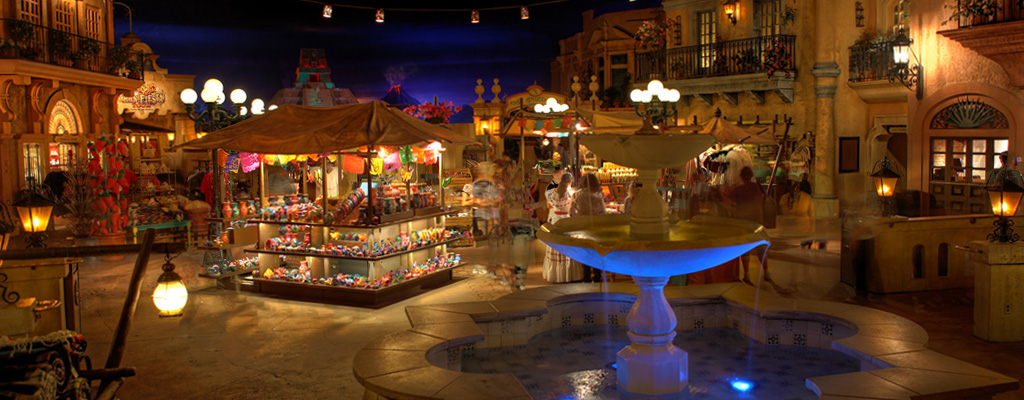
Cobblestone streets, romantic parks and old colonial houses provide the charm of the cafes and restaurants of the colonial San Angel, one of the most beautiful areas in the south of Mexico City.
Until the 1950s, San Ángel was a place away from Mexico City, where wealthy families were going to relax at large houses over the weekend. Although now part of the DF, its old charm remains in its cobbled streets, colonial houses, old gates and squares, ideal for walking. The walk can start with Altavista, the trend avenue of the neighborhood, with boutiques, gourmet shops and restaurants. Recently the Paseo José Luis Cuevas exhibition was installed along the ridge, with 15 sculptures by the Mexican plastic artist. Here you will also find the (1) Diego Rivera and Frida Kahlo Studio Museum (Diego Rivera 2). The two houses, of the first functionalists in the country, were built by Juan O’Gorman in 1928 especially for Diego and Frida, who lived in each one, with a bridge that connects their roofs. Today the museum houses objects of popular and pre-Hispanic art from Diego’s personal collection, and the room on the top floor is preserved as the painter left it, with his huge shoes and brushes. Next to it is the restaurant (2) San Ángel Inn (Diego Rivera 50); by tradition, one of the city’s favorites, in an old Carmelite hacienda of 1692. You have to take a margarita in the romantic inner courtyard and, for dinner, the “blackberry sauce duckling” is delicious. Down the avenue, the boutiques (3) Mei-b (Plaza San Ángel, Altavista 131) and (4) La Coupôle (Altavista 207) offer original clothing and accessories. In the old Plaza San Ángel there are also good gourmet shops: (5) Maque (Plaza San Ángel, Altavista 131) began as a small bakery in the north of the city, and now it has become one of the chains of bread and coffee most prestigious. The one in San Ángel is the most recent, you should not miss the nut cookies and blueberry shortbread. The traditional Mexican candy store (6) El Secreto, packs the candies in brass boxes with colored paper. Opposite is also the L’Atelier du Chocolat chocolate shop, but hey, enough of food.
If you go to Avenida Revolucion, you will find the (7) Carrillo Gil Museum of Modern Art (Av. Revolucion 1608), which includes one of the most complete collections of José Clemente Orozco and rooms dedicated to Rivera and Siqueiros. The museum is also recognized for presenting temporary exhibitions of young artists. A couple of blocks away, the (8) Centro Cultural Helénico (Av. Revolution 1500) offers theatrical performances in its 16th-century forums, in addition to its Spanish chapel preserves paintings by Tintoretto and Murillo. On Revolution Avenue, the (9) Mercado de las Flores is a colorful emblem of San Ángel. Its small fruit store that prepares juices at the time of order.
On the cobbled Avenida de la Paz, the (10) Parish of San Jacinto (Plaza San Jacinto 18), one of the oldest temples in Mexico City, was built in the early 16th century by Dominican friars, when the population still It was on the outside of the city. Its garden houses one of the first carved crosses in Mexico, with Christian and pre-Hispanic details. One of the most spectacular attractions in the San Ángel neighborhood is the (11) Fuente del Museo de la Casa del Risco (Plaza de San Jacinto 15), an 18th-century mansion with the art collection of the politician and writer Isidro Fabela, last owner of the property before he donated it as a museum. The main attraction of the place is the fountain of the patio, the only example of the ultra-baroque that exists in Mexico, built with tiles and containers of Chinese porcelain such as cups and plates, shells and figurines (cliffs). The 800 pieces of the museum include portraits of Rubens, Fontainbleau and José María Velasco. Do not miss the experience of breakfast and walk through the (12) Bazar Sábado, in front of the Plaza San Jacinto, where on the weekends they sell paintings, handicrafts and put on silver and Mexican jewelry. The restaurants in the square offer Mexican snacks (Saks has live marimba and good breakfasts). On Avenida de la Paz there is also the (13) Centro Cultural San Ángel (Av. Revolución 1747), which after being part of the Carmen Convent and being the San Ángel Municipal Palace, today functions as a theater and art house. But it is time for a break, and to talk about food again. One of Sanangelin’s most precious secrets is the (14) Café Corazón (Frontera 4), a bohemian space where live trova music is played on Fridays and Saturdays starting at eight o’clock at night, in a quiet light environment of the candles. The menu is small but very good, with pizzas, salads and homemade desserts by the owners themselves.
One of the most beautiful historical buildings in the city is the (15) Ex convento y Museo del Carmen (Revolution Av. 1734), built in 1615 by the Carmelite order. It still retains its old aqueduct, which provided water to the 13,000 fruit trees of the friars. The garden, which supplied much of the markets in Mexico City, is still well preserved and is a green respite in the middle of Revolution Avenue. The museum preserves original frescoes and an important collection of antique furniture. The crypts exhibit five 17th-century mummies in excellent condition, and the church is dressed in talavera domes. Next to the convent you have to try the (16) Churros del Convento (Plaza del Carmen 4), famous among southerners, who come for a cup of hot chocolate and stuffed churros. The Restaurant (17) Paxia (Av. De la Paz 47) offers an original Mexican food menu. Try the green pork rind lasagna, or the mole mouse cup with meat patties, sprinkled with sugar. The glasses are made of porcelain, but they are shaped like the typical plastic party glasses. Opposite Paxia is also the Italian restaurant (18) Trattoria Della Casa Nova (Av. De la Paz 40), whose gourmet shop sells artisanal bread and all kinds of delicatessen. At the end of the avenue, the shop (19) La Carreta (Av. De la Paz s / n) sells Mexican handicrafts, from tequila glasses to hand-embroidered tablecloths in an old house, of course, like the typical ones in San Ángel.

